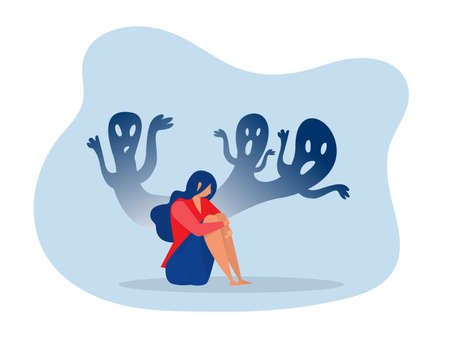Hiding in Plain Sight: The Sneaky Side of Anxiety


The fall is a very busy and exciting time for kids and families. It can bring the excitement of starting a new sport or activity, the joy of reuniting with friends after a long summer, or the possibility of a new course load for the year. However, all of these new experiences can also elicit a whole slew of worries in anxiety-prone children. While sometimes anxiety is really obvious to spot… often it’s very sneaky, manifesting in surprising ways.
Know the Sneaky Signs of Anxiety
Anxiety looks a little bit different for everyone and can be tricky to spot. Knowing the common signs, as well as the sneakier signs of anxiety can help us to recognize what is going on, and better prepare us to manage it.
Here are some common and sneaky signs:
- Frequent headaches or stomach aches: Anxiety has real, physiological impact on our bodies. Physical symptoms are often associated with anxiety, especially for kids. These aches and pains are not fake or for attention, they are very real! If your child is complaining of stomach aches, joint pain or headaches often with no clear medical explanation, it may be a sneaky sign of anxiety.
- Avoidance: When things get scary, it can be a lot easier to pretend like the scary things aren’t happening. Kids may avoid talking about the source of their anxiety, refuse to go somewhere, have trouble getting ready, or try to avoid going or participating in the thing that makes them anxious. The behaviors kids display when trying to avoid anxiety can be really creative!
- Mood changes: Anxiety reactions make us irritable and sad! Anxiety can be sneaky, wearing the mask of another emotion. Getting upset or irritated more easily can be a sign that a child is overwhelmed, worried or nervous.
- Changes in eating: A child might skip eating, eat more than usual, or change their preferences regarding food. This can be a sign of underlying anxiety. Without knowing, they may be making an attempt to control things that feel “out of control” by restricting food intake, avoiding certain foods, or overeating.
- Clinginess: Separation is hard, and if a child is showing signs of not wanting to be apart from their parents or having a hard time separating from parents, it can be a sneaky sign of larger worries. For older kids, this might look like constantly texting parents to gain reassurance.
- Defiance: Defiance is often a sign of underlying anxiety in kids. Their outwardly defiant behavior may be an attempt to cope with overwhelming feelings and situations. Recognizing this connection can help parents address the root cause and provide appropriate support.
The Take Home
Anxiety can be a sneaky culprit to spot; our kids have very creative ways to get their needs met and oftentimes their outward behaviors or emotional reactions don’t obviously point to anxiety. But as parents and providers, we can work together to spot these signs and patterns and ensure your child gets the support they need to thrive.
Additional support in understanding anxiety is available. Call our office and get connected with one of our specialists.
Wishing you and your child a happy and healthy fall season!

Recent Comments